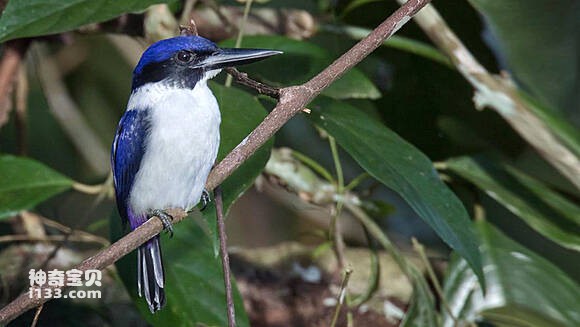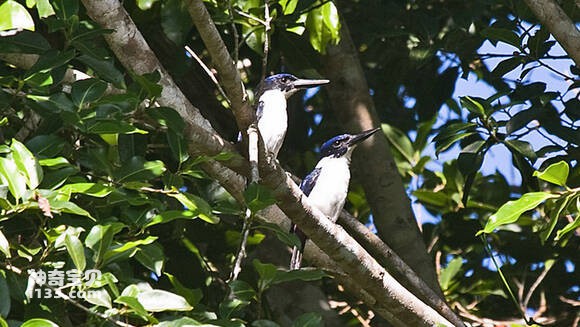Todirhamphus leucopygius
IUCN
LCBasic Information
Scientific classification
- name:Todirhamphus leucopygius
- Scientific Name:Todirhamphus leucopygius,Ultramarine Kingfisher
- Outline:Climbing birds
- Family:
Vital signs
- length:About 21 cm
- Weight:35-61g
- lifetime:No textual research information is available
Feature
Distribution and Habitat
The emerald is found in Papua New Guinea and the Solomon Islands. Greater Solomon Islands, from Buka and Bougainville, through Shortlands, Choiseul, Santa Isabel and Florida to Guadalcanal.
The deep blue emerald lives in the wild in the rainforests and lowlands of the islands of Bougainville and Solomon Islands. Its range continues east to Guadalcanal and the Florida Keys. They can reach an altitude of 2,000 meters above sea level. Active on forest edges, wooded gardens, natural growth and regrowth of bushes. It's found in the valleys at the foot of the mountains and along the coast.
Appearance
The dark blue jade is 21 cm long, the female bird weighs 35-52 grams, and the male bird weighs 44-61 grams. Adult males have a bluish-purple forehead and top, with lighter sides. There is a narrow black band covering from the front of the eyes, passing under the eyes and from the cheeks to the neck. There is a wide white band on the back of the head on both sides of the neck, forming a white collar. The top back and shoulder blades form a deep bluish-purple color. The bottom and back sides are white. Middle tail blue purple. The tail is blue-black. Wings bluish-purple, feathering black. The wings are covered with white. The chin, throat, chest, abdomen and sides are all pure white, with a prominent bright red tail. The mouth is black or dark gray.
The iris is dark brown and surrounded by black eye rings. The legs are black. The adult female differs from the male primarily in that it has a blue-purple coat on its back and underside, rather than white. Young birds differ from adults w
Details
Ultramarine Kingfisher, Todirhamphus leucopygius, is a single species with no subspecies.

Dark blue jadeite usually lives alone or quietly on trees or telephone poles. These forest birds tend to perch on roadsides, near human homes, and even into large gardens. They greet their partners during courtship. These are noisy birds that make a noise both in flight and at rest. Their bird song, "Kidekkidekkidek," is similar to the ringing of a bell, repeated rapidly and quickly.
The deep blue jade is usually hunted alone or in pairs. Like most forest kingfishers, they are completely carnivorous. Often searching for prey in leaves or dirt. The main diet is invertebrates such as crickets, spiders, scorpions, and snails. It also eats small vertebrates such as small fish, small snakes and lizards.

Deep blue jadeites burrow into termite hollowed tree trunks for nests. The spawning season on Bougainville is in September and October. To date (2008), there is no data to confirm the size of the eggs or the duration of hatching, and the reproductive habits of the emerald are unknown.
Listed on the International Union for Conservation of Nature (IUCN) 2013 Red List of Threatened Species ver 3.1 - Low Risk (LC).
Protect wild animals and eliminate wild meat.
Maintaining ecological balance is everyone's responsibility!








